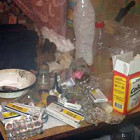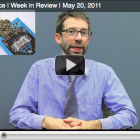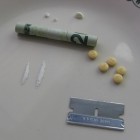
Bound by the Needle, the Dealer and the Drug – Heroin Stories, Part 1
|
Chris Blum is laughing again, each breath a small wheeze followed by a noise that cuts through the surrounding sounds of the coffee shop patio. It’s full and rich, staccato and guttural; four beats long, the laugh of a man who sees the blessing in having anything to laugh about at all.
He’s a big guy, tall with a softness that comes with the newfound freedom to eat food without vomiting it back up again. Not long ago, Blum was a heroin addict. On this hot, sunny afternoon, Blum is sitting under an umbrella, dabbing perspiration away with a napkin and telling me about one of his jobs when he was an addict: a money collector for his dealer.
“I was a nice guy the first time,” he says, smiling. “The second time you didn’t see me coming.”
But then there’s the change, the dip from major to minor keys as he stops laughing. Sitting outside, I can’t see his eyes behind the dark sunglasses, but his smile quickly fades as he recounts one method of collecting a debt.
“The second time,” he continues, “you’d walk in the door and your girlfriend would be duct-taped and I’d have a gun to her head and a broomstick shoved up her ass.”
Blum pauses for a moment turning his face to mine, his last words hanging there awkwardly.
Chris Blum. Photo by Ryan Schill
Heroin addicts will do anything for a fix, Blum tells me, things they never thought they were capable of. For Blum, that meant helping his dealer with the dirty work.
“You’re not a very nice guy if you’re collecting money for drug dealers,” he said. “At that point, I did more drugs just to erase the memories of the crazy shit I was doing to people.”







